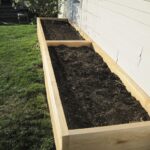Vegetables play a crucial role in gardens, offering a diverse range of produce that not only enhances the beauty of outdoor spaces but also provides nutritious options for homegrown meals. Amongst the variety of vegetables cultivated in gardens worldwide, one question lingers: what is the most common vegetable in gardens? Gardeners often seek out easily grown, popular, and versatile options to cultivate, ensuring a successful harvest year after year.
Factors such as ease of cultivation, popularity among gardeners, and culinary versatility contribute to a vegetable’s commonality in gardens. The top contenders for the title of the most common vegetable include a mix of familiar favorites and kitchen staples found across different gardening landscapes.
From leafy greens like lettuce and spinach to root vegetables like potatoes and beets, the world of common garden vegetables offers an array of options for gardeners to choose from based on their preferences and growing conditions.
One standout vegetable that reigns supreme in many garden plots is the versatile tomato. With numerous cultivars available to suit various climates and tastes, tomatoes hold a special place in gardens due to their culinary flexibility and abundant yields. As we delve into exploring the significance of different vegetables commonly grown by gardeners around the globe, let’s uncover the secrets behind cultivating these bountiful plants for a rewarding gardening experience.
What Makes a Vegetable Common?
When considering what makes a vegetable common in gardens, several factors come into play. One of the key elements contributing to a vegetable’s popularity is its ease of cultivation. Vegetables that require minimal care, have straightforward planting and maintenance instructions, and are resilient to pests and diseases are often preferred by gardeners. This ease of cultivation not only makes it more appealing for beginners but also ensures a successful harvest for seasoned gardeners.
Popularity among consumers is another significant factor that determines a vegetable’s common presence in gardens. Vegetables that are widely used in various cuisines, liked by many people, and have versatile culinary applications tend to be grown more frequently. For example, tomatoes are not only beloved for their taste but also prized for their ability to be used in salads, sauces, soups, and countless other dishes. This broad appeal makes them a staple in most garden plots.
Versatility is also a crucial aspect when it comes to the commonality of vegetables in gardens. A vegetable that can be consumed in multiple ways – raw, cooked, preserved – or used for different purposes – culinary, medicinal – tends to be favored by gardeners seeking variety in their harvests. Carrots, for instance, can be eaten fresh as snacks or salads, cooked as side dishes or incorporated into main courses like stews and soups.
Their adaptability makes them a popular choice among gardeners looking for multipurpose produce to cultivate. Ultimately, it is the combination of these factors – ease of cultivation, popularity among consumers, and versatility – that elevates certain vegetables to become the most common ones found in gardens around the world.
The Top Contenders
Vegetable gardens are a beloved and essential part of many households, providing fresh produce, promoting sustainability, and enhancing the overall well-being of individuals. Among the vast array of vegetables commonly grown in gardens worldwide, one stands out as particularly ubiquitous – the tomato. Renowned for its versatility, vibrant colors, and delicious taste, tomatoes are a staple in virtually every garden.
This fruit, often mistaken for a vegetable due to its culinary uses, is packed with essential nutrients like vitamin C and lycopene. With a multitude of cultivars available ranging from cherry tomatoes to beefsteak varieties, there is a type of tomato for every gardener’s preference.
In addition to tomatoes, another vegetable that holds an esteemed place in garden beds is the zucchini. This summer squash is known for its prolific nature and ability to adapt to various climates and growing conditions. The zucchini plant produces an abundance of fruit throughout the growing season, making it a popular choice among gardeners looking to harvest fresh produce regularly.
Versatile in its usage, zucchinis can be enjoyed grilled, sautéed, baked into bread, or incorporated into pasta dishes. Its mild flavor and tender texture make it a versatile ingredient suitable for both savory and sweet recipes.
Lastly, peppers rank high on the list of popular vegetables found in gardens across the globe. Whether sweet bell peppers or fiery hot chili peppers, these vibrant fruits add color, flavor, and heat to any dish they grace.
Peppers are rich in antioxidants like vitamin C and capsaicin – responsible for their spicy kick – making them not only flavorful but also beneficial for health. With numerous varieties available ranging from mild to intensely hot, peppers offer a diverse range of options for gardeners seeking to spice up their culinary creations.
| Vegetable | Unique Characteristics |
|---|---|
| Tomato | Versatile cultivars available; Rich in vitamin C and lycopene |
| Zucchini | Prolific nature; Adaptable to different climates; Mild flavor suitable for various dishes |
| Peppers | Diverse range from sweet bell peppers to fiery chili peppers; Rich in antioxidants like vitamin C and capsaicin |
The Versatile Tomato
The tomato is undoubtedly one of the most common vegetables found in gardens around the world. Its versatility in culinary applications, ease of cultivation, and delicious taste make it a favorite among gardeners of all levels. Whether you’re a beginner looking to try your hand at gardening or a seasoned pro with a green thumb, growing tomatoes can be a rewarding experience.
Varieties of Tomatoes
There are numerous cultivars of tomatoes to choose from when planning your garden. From cherry tomatoes bursting with sweetness to beefsteak tomatoes perfect for slicing on sandwiches, there is a type of tomato for every taste preference. Heirloom varieties offer unique colors and flavors, while hybrid tomatoes are bred for disease resistance and high yields. Determinate tomatoes are compact plants ideal for container gardening, while indeterminate varieties continue to grow and produce fruit throughout the season.
Tips for Successful Tomato Growth
To ensure a successful tomato harvest, there are some essential tips to keep in mind. Tomatoes thrive in full sun, requiring at least 6-8 hours of direct sunlight daily. Plant them in well-draining soil rich in organic matter and provide consistent moisture to prevent issues like blossom end rot.
Proper spacing between plants allows for good air circulation and reduces the risk of diseases such as blight. Mulching around the base of tomato plants helps retain soil moisture and suppresses weed growth.
Harvesting and Enjoying Your Tomatoes
As your tomato plants mature, you’ll be rewarded with an abundance of delicious fruit ready for harvesting. Ripe tomatoes will have vibrant colors and give slightly when gently squeezed. Simply twist or cut the fruit from the vine and enjoy it fresh in salads, sandwiches, sauces, or grilled dishes.
If you find yourself with an excess of tomatoes, consider preserving them by canning, drying, or freezing for use later in the year. With proper care and attention, growing tomatoes can bring joy to any gardener’s heart and stomach alike.
The Ubiquitous Carrot
Carrots are undoubtedly one of the most commonly grown vegetables in gardens around the world. Their widespread popularity can be attributed to a combination of factors that make them a favorite among both beginner and experienced gardeners. Known for their ease of cultivation, carrots are relatively low maintenance plants that thrive in various climates and soil conditions. This makes them an attractive option for gardeners looking to grow their own produce without requiring extensive expertise or resources.
One of the key reasons behind the ubiquity of carrots in gardens is their versatility in culinary applications. Whether eaten raw as a crunchy snack, cooked in soups and stews, or used as a key ingredient in dishes ranging from salads to desserts, carrots offer endless possibilities for creative cooking.
Their natural sweetness adds depth to savory dishes, while their vibrant color provides visual appeal to any recipe. Additionally, carrots can be preserved through methods like pickling or freezing, allowing for year-round enjoyment of this nutritious vegetable.
In addition to their culinary value, carrots are also renowned for their numerous health benefits. Rich in beta-carotene, which is converted into Vitamin A in the body, carrots contribute to good vision health, immune function, and skin health. They are also a good source of fiber, which aids in digestion and promotes feelings of fullness.
Consuming carrots regularly is linked to lower risk of chronic diseases like heart disease and certain types of cancer, making them a valuable addition to any diet. With such a wide range of benefits and versatile uses, it’s no wonder that carrots remain a staple in gardens worldwide.
Leafy Greens Galore
Leafy greens are some of the most versatile and nutritious vegetables commonly grown in gardens around the world. Lettuce, kale, and spinach are among the favorites due to their rich flavors, vibrant colors, and high nutritional value. These leafy greens are not only easy to grow but also offer a plethora of health benefits when consumed regularly.
Lettuce is a staple in many gardeners’ plots due to its fast growth and ability to thrive in various climates. With different varieties such as romaine, butterhead, and arugula, lettuce adds a crisp texture to salads, sandwiches, and wraps. Packed with vitamins A and K, along with essential minerals like calcium and iron, lettuce is a valuable addition to any diet.
Kale has gained immense popularity in recent years for its superfood status. This leafy green vegetable is known for being nutrient-dense, providing high levels of vitamins C, K, and A. Its robust flavor makes it an excellent addition to smoothies, soups, or even roasted as crispy kale chips. Easy to grow and resistant to pests, kale is a must-have in any garden for health-conscious individuals looking to boost their immune system and overall well-being.
Spinach rounds out the trio of leafy greens with its tender leaves and mild taste that blends seamlessly into various dishes. Rich in iron, magnesium, and antioxidants like lutein and zeaxanthin, spinach supports heart health, aids digestion, and promotes healthy vision. Whether added raw to salads or cooked into savory pies and pasta dishes, spinach offers a myriad of culinary possibilities that make it an essential component of any home garden.
| Vegetable | Nutritional Benefits |
|---|---|
| Lettuce | Rich in vitamins A & K; good source of calcium & iron |
| Kale | High levels of vitamins C & K; nutrient-dense superfood |
| Spinach | Iron-rich; high in magnesium & antioxidants like lutein |
Root Vegetables Roundup
Root vegetables are an essential component of any garden, offering a variety of flavors, textures, and nutrients to dishes. Among the plethora of vegetables commonly grown in gardens, root vegetables stand out for their versatility and nutritional value. But which root vegetable reigns supreme as the most common in gardens around the world? Without a doubt, potatoes take the crown as the most popular root vegetable grown by gardeners.
There are countless reasons why potatoes are considered the king of root vegetables when it comes to garden cultivation. From their adaptability to different soil types and growing conditions to their long storage life after harvesting, potatoes continue to be a staple in gardens worldwide. Whether you prefer creamy mashed potatoes, crispy fries, or hearty potato soups, this versatile vegetable offers endless culinary possibilities.
To successfully grow potatoes in your garden, follow these simple steps:
- Choose seed potatoes that are certified disease-free
- Plant them in well-draining soil with plenty of sunlight
- Keep the soil consistently moist but not waterlogged
- Hill or mound soil around the base of the plants as they grow to promote tuber development
- Harvest when the foliage starts to yellow and die back
As you enjoy the bountiful harvest of potatoes from your garden, consider experimenting with different varieties such as Russet, Yukon Gold, or Purple Majesty to add unique flavors and colors to your meals. With proper care and attention, you can have a continuous supply of fresh, homegrown potatoes throughout the growing season. So why not add this beloved root vegetable to your garden lineup and savor the delicious rewards it brings?
Herbs and Spices
When it comes to popular choices for herb and spice cultivation in gardens, basil undoubtedly takes the lead as a versatile and aromatic herb. Whether used in pesto, salads, or sauces, basil adds a distinct flavor profile that is loved by many. With different cultivars like sweet basil, Thai basil, and purple basil available, gardeners have the opportunity to explore various tastes and scents within this single herb.
Mint is another beloved herb commonly found in gardens due to its fresh and cooling properties that make it perfect for beverages, sauces, and desserts. With varieties such as spearmint, peppermint, and chocolate mint offering different nuances of flavor, mint is not only easy to grow but also provides endless opportunities for creative culinary endeavors.
Oregano is yet another staple herb known for its robust taste that complements Mediterranean cuisine beautifully. Whether dried or fresh, oregano adds depth to dishes like pasta sauces, roasted vegetables, grilled meats, and more.
Conclusion
In conclusion, the world of vegetable gardening is rich and varied, offering a plethora of options for gardeners to explore and enjoy. From the versatile tomato to the ubiquitous carrot, leafy greens galore, root vegetables roundup, and herbs and spices, there is no shortage of choices when it comes to cultivating a diverse range of produce in your garden.
Each vegetable brings its own unique set of flavors, textures, and nutrients to the table, making gardening an exciting and rewarding endeavor.
As mentioned earlier, factors such as ease of cultivation, popularity, and versatility contribute to a vegetable being commonly grown in gardens. While tomatoes may reign supreme as one of the most popular choices for gardeners worldwide due to their adaptability and variety of cultivars available, carrots continue to be a staple with their widespread appeal and health benefits.
Leafy greens like lettuce, kale, and spinach offer nutritional value and culinary versatility, while root vegetables such as potatoes, radishes, and beets are hearty crops that thrive in many climates.
So whether you are a seasoned gardener looking to expand your vegetable repertoire or a novice eager to get started on your gardening journey, I encourage you to explore different vegetables in your own gardens for a bountiful harvest. Experiment with new varieties, try different planting techniques, and savor the joy of growing your own fresh produce right at home.
With dedication, patience, and a touch of green thumb magic, you can create a thriving vegetable garden that will reward you with an abundance of delicious harvests for years to come.
Frequently Asked Questions
What Is the Most Planted Vegetable?
The most planted vegetable worldwide is the tomato. Tomatoes are versatile, easy to grow, and widely used in various culinary dishes. Their popularity makes them a staple in many home gardens and commercial farms.
What Are the 10 Easiest Vegetables to Grow?
Some of the 10 easiest vegetables to grow include lettuce, radishes, green beans, zucchini, cucumbers, tomatoes, peppers, spinach, carrots, and peas. These vegetables are relatively low-maintenance and adaptable to different growing conditions, making them ideal for beginners or those with limited gardening experience.
What Is the Most Popular Vegetables?
The most popular vegetables among consumers vary depending on geographic location and cultural preferences. However, some universally loved vegetables include tomatoes, peppers, cucumbers, carrots, lettuce, broccoli, spinach, onions, potatoes, and green beans. These vegetables are commonly found in grocery stores and farmers’ markets due to their widespread appeal and versatility in cooking.

If you’re looking to get into vegetable gardening, or are just looking for some tips on how to make your current garden better, then you’ve come to the right place! My name is Ethel and I have been gardening for years. In this blog, I’m going to share with you some of my best tips on how to create a successful vegetable garden.





